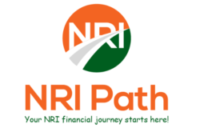For NRIs living in the United States, retirement planning involves navigating two tax systems—India and the U.S.—while optimizing investment growth, minimizing tax liability, and preserving long-term wealth. Asset location and withdrawal sequencing are advanced strategies that help NRIs align their global portfolios with U.S. tax rules and cross-border planning goals.

Asset Location: Placing Investments for Tax Efficiency
Asset location refers to the strategic placement of investments across taxable, tax-deferred, and tax-free accounts based on how those assets are taxed under U.S. law.
Key U.S. Account Types:
- Taxable Accounts: Standard brokerage accounts; subject to annual taxation on dividends, interest, and capital gains
- Tax-Deferred Accounts: Traditional IRA, 401(k); taxed upon withdrawal
- Tax-Free Accounts: Roth IRA, Roth 401(k); qualified withdrawals are tax-free
India-Based Accounts (for NRIs):
- NRE Accounts: Interest is tax-free in India; may be taxable in the U.S.
- NRO Accounts: Interest is taxable in India and reportable in the U.S.
- Indian Mutual Funds/Stocks: Subject to Indian capital gains tax; U.S. may treat some as PFICs (Passive Foreign Investment Companies), triggering complex tax reporting
Asset Placement Guidelines:
| Asset Type | Optimal Location | Rationale |
|---|---|---|
| Bonds / REITs | Tax-Deferred | Ordinary income taxed at higher rates |
| U.S. Equities (buy-and-hold) | Taxable | Favorable long-term capital gains treatment |
| High-growth assets | Roth | Maximize tax-free compounding |
| Indian assets | NRE/NRO + U.S. reporting | Consider DTAA and PFIC rules |
| Legacy | Tax Free Life Insurance | Asset Protection Tax-Free |
Note: NRIs must comply with FBAR and FATCA reporting for foreign accounts exceeding thresholds.

Withdrawal Sequencing: Managing Retirement Income Across Borders
Withdrawal sequencing is the order in which retirement assets are accessed. For NRIs in the U.S., this involves coordinating withdrawals from domestic and foreign accounts to minimize tax exposure and optimize retirement income.
1. Taxable Accounts First
Start by drawing from brokerage accounts.
Why this is strategic:
Withdrawing from taxable accounts first allows you to defer withdrawals from tax-advantaged accounts (like IRAs or 401(k)s), which would generate ordinary income and possibly push you into a higher tax bracket.
2. Tax-Deferred Accounts Next
After reducing taxable assets, begin withdrawing from traditional IRAs and 401(k)s.
Why this is strategic:
If you wait until RMDs kick in, you might be forced to take larger distributions than you want or need, which could increase your tax liability. By strategically withdrawing before that time, you can better manage how and when you pay taxes. You could withdraw in years when your taxable income is lower to avoid paying a higher tax rate.
3. Roth Accounts Last
Roth IRAs and Roth 401(k)s are your most tax-efficient assets.
Why this is strategic:
Since Roth accounts provide tax-free income, withdrawing from them last allows them to grow as much as possible without triggering taxes. They’re also great for leaving a legacy since heirs can generally withdraw funds tax-free, provided they follow the rules. Additionally, Roth IRAs don’t have RMDs, so they can be a strategic asset to leave untouched as long as possible.
4. Annuities as a Stabilizer (Use Anytime for Income Layering)
A high-quality annuity can be added at any stage of retirement.
Why this is strategic:
Annuities create predictable, lifetime income that does not depend on market performance. This reduces the pressure on investment withdrawals, protects against sequence-of-returns risk, and can provide inflation-adjusted income over time. For NRIs, it also simplifies retirement cash flow and reduces cross-border planning stress.
Cross-Border Considerations for NRIs
• RMDs Begin at Age 73
Applies to traditional IRAs and 401(k)s.
Disclaimer: RMD age depends on year of birth and may change with legislation.
• Roth IRAs Have No RMDs
Ideal for continued tax-free growth and legacy planning.
• Withdrawals in India May Be Taxed Twice
Use the U.S.–India DTAA to avoid double taxation and claim foreign tax credits where applicable.
• Currency Conversion Timing
Consider converting USD to INR when exchange rates are favorable to maximize value.
• Medicare & Social Security
Coordinate withdrawals to manage MAGI, optimize benefit taxation, and avoid IRMAA surcharges.
Why This Matters
Strategic asset location and withdrawal sequencing can:
- Reduce lifetime tax liability across U.S. and Indian jurisdictions
- Preserve eligibility for U.S. benefits (e.g., Medicare, Social Security)
- Improve portfolio longevity and repatriation efficiency
- Enhance estate planning outcomes for heirs in both countries

Next Chapter: Roth Conversion Strategy & Retirement Income Ladder
Next, we’ll explore how NRIs in the U.S. can execute Roth conversions at optimal times and build a retirement income ladder that minimizes tax surprises. This chapter unlocks powerful tools for controlling taxable income and maximizing tax-free growth across borders.
